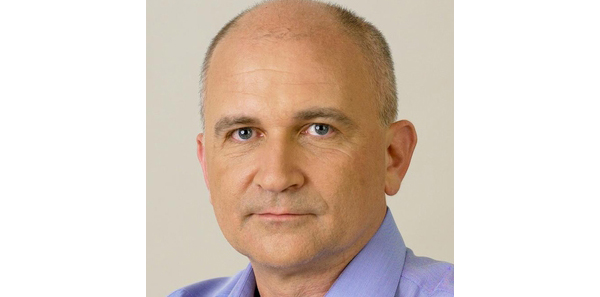1:30min

Professor Mark Willcox
______________________________
By Helen Carter
Journalist
Medical microbiologist Professor Mark Willcox will receive the 2017 H Barry Collin Research Medal in recognition of his outstanding research in the contact lens field.
His research may also help diagnose and monitor people with cancer and diabetes.
The medal is named after Emeritus Professor Barry Collin, who this year celebrates 23 years as Editor in Chief of Optometry Australia’s journal, Clinical and Experimental Optometry.
The award recognises outstanding contributions to the advancement of knowledge in optics, vision science or clinical optometry by a person who is an Australian citizen or a graduate of an Australian optometry school, or who has done a significant part of his or her research in an Australian institution.
Professor Willcox came to Australia to work in dental microbiology but transferred to working in and excelling in the vision field.
‘I arrived in Australia in 1988, after finishing my PhD in medical microbiology at the University of Manchester, UK, on a two-year contract as a post-doctoral student working in dental microbiology and never left,’ he said.
‘I became an Australian Citizen in 1993, about the same time I started working in the School of Optometry and Vision Science at UNSW.’
Professor Willcox is Professor and Director of Research in the School of Optometry and Vision Science at the University of New South Wales, Associate Dean for Research Training and a member of UNSW’s Equity, Diversity and Inclusion Board.
He co-ordinates and teaches the course Introduction to Ocular Disease, and co-ordinates the research projects for final-year optometry students.
The honour is accompanied by a monetary prize of $5,000 which Professor Willcox will contribute to furthering the research of post-doctoral and post-graduate students in his laboratory, and he will submit a paper for publication in the journal.
‘It is a very great honour, especially as I hold the previous winners of this award in such high esteem,’ he said. ‘I am very grateful for being nominated and winning this award. It means a great deal to me.
‘I hope my contributions to the field of contact lens research have been useful, including my work with others to elucidate the factors responsible for inflammation of the eye during lens wear and, of course, how to reduce the incidence of this.
‘My work on the tear film, often related to contact lens wear, may in the future help improve the experience of contact lens wear but might also help diagnose or monitor people with other diseases such as diabetes and cancer.’
Tears as biomarkers for disease
His laboratory focuses on contact lens research, specifically understanding the aetiology of adverse events and comfort during contact lens wear.
With his team, he has also investigated the use of tears as the source of biomarkers for diabetes, and breast and prostate cancer. These research studies have led to the publication of 12 patents and more than 350 peer reviewed papers.
Currently funded projects include four NHMRC and ARC grants investigating antimicrobial biomaterials and novel antimicrobials.
They focus on design and testing of novel antimicrobial surfaces for medical devices from laboratory through pre-clinical to clinical testing, discovery of biomarkers of human disease from tears, understanding changes to tears during contact lens wear and impact of ocular health and comfort, and assessing microbial and mammalian responses during keratitis.
‘Our research includes adhesion and biofilm formation of ocular pathogenic microbes, most notably Pseudomonas aeruginosa, and development of novel antimicrobial surfaces,’ he states on UNSW’s website. ‘This research involves the study of microbial pathogenesis and mammalian tissue responses to microbes and biomaterials.
‘We have established several animal and cell-based models for studying contact lens adverse events and biomaterial infections. Our research has also encompassed proteomic and lipidomic studies of the tear film and its interaction with contact lenses.
‘We have applied new techniques that allow the quantification of individual proteins and lipids that adsorb onto contact lenses, or are biomarkers for changes to the ocular surface. This allows researchers, for the first time, to be able to assess the contribution of particular proteins or lipids to the production of adverse responses during lens wear.’
Achievements
Professor Willcox was also joint recipient, with Dr Sivaraman Balasubramanian and Associate David Pye, of the 2016 J Lloyd Hewett Award for the best article published in Clinical and Experimental Optometry in the previous three years. The paper was on eye-rubbing and keratoconus.
He was the British Contact Lens Association Medal recipient 2011, the American Academy of Optometry’s Max Schapero Award recipient 2011, received the Cornea and Contact Lens Society of Australia’s Distinguished Service Award for 2011 and was recipient of an Australia-India Senior Visiting Fellowship from the Australian Academy of Science in 2012.
In 2006 he received the University of Houston College of Optometry’s Distinguished Research on Cornea and Contact Lens Award, in 2009 the UNSW Vice Chancellor’s Award for Teaching Excellence – Postgraduate Supervision, and in 2010 Optometry Giving Sight’s Major Contributor Award.
Professor Willcox is past president of the International Society for Contact Lens Research and a board member and treasurer of the Tear Film and Ocular Surface Society. He is a fellow of the American Academy of Optometry, British Contact Lens Association, Association for Research in Vision and Ophthalmology and Australian Society for Microbiology.